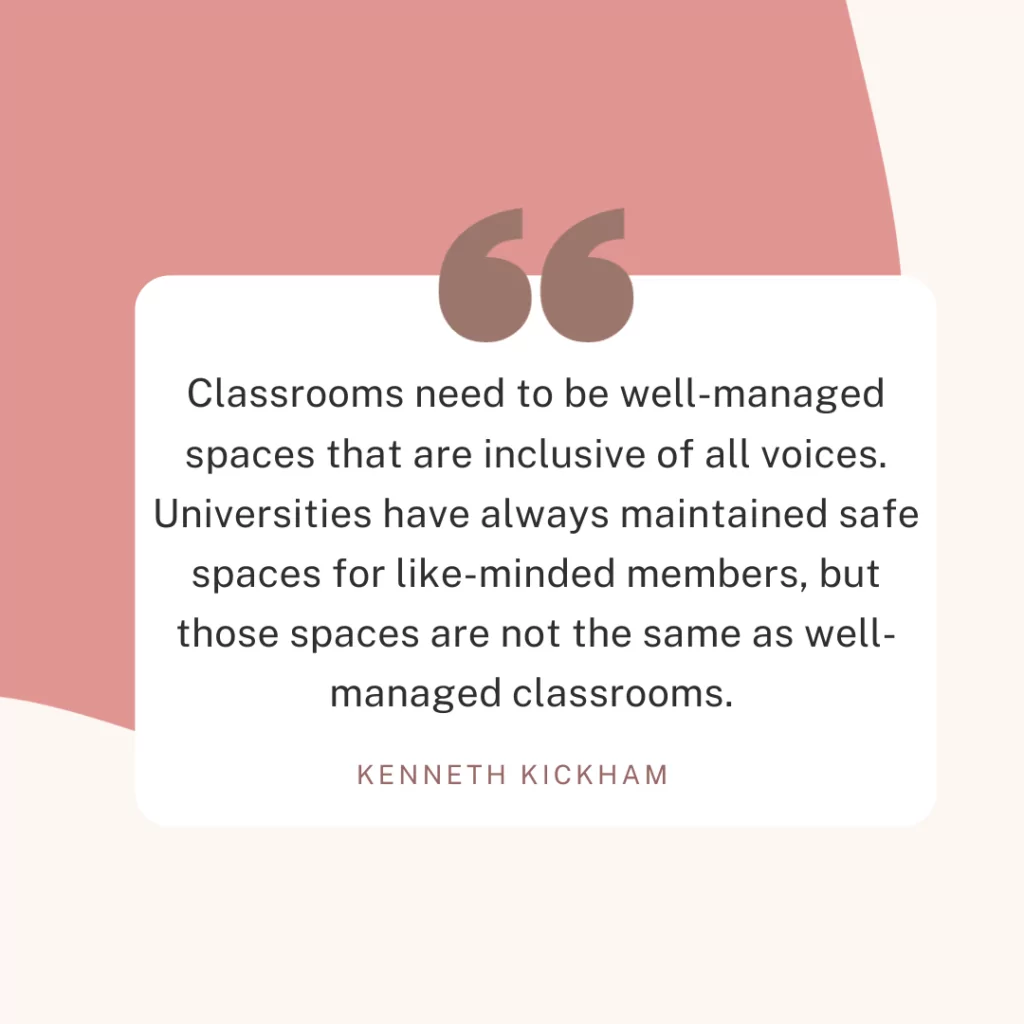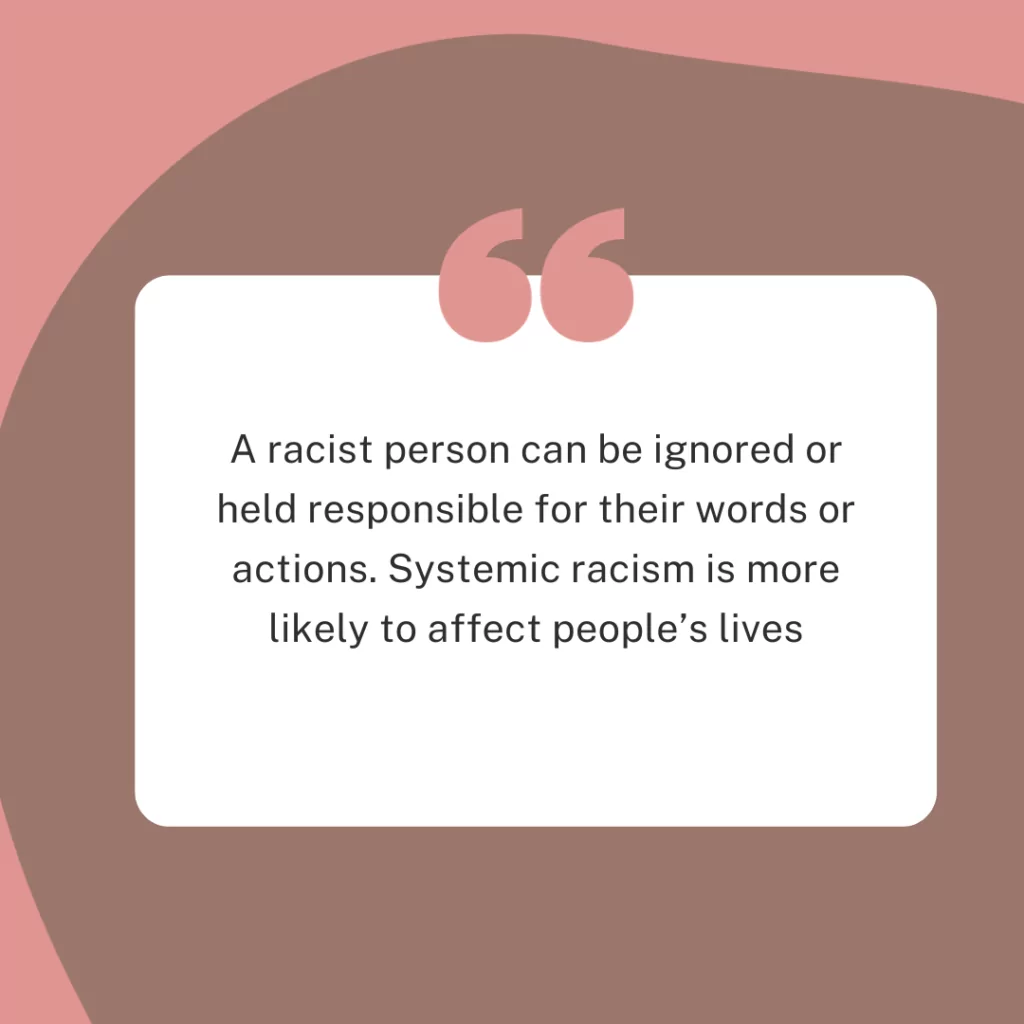One purpose of education is to cultivate a vision of society that makes sense. In multi-racial and multi-ethnic societies, it makes sense to be inclusive and fair in public life. Higher education does its part by enabling an ongoing exchange of perspectives that fully incorporates minority views. Discussions of racial justice, however, can inflame controversy and activate our hostilities toward one another. Fortunately, there are promising avenues to healthier, more productive campus discourse on race.

✅ AI Essay Writer ✅ AI Detector ✅ Plagchecker ✅ Paraphraser
✅ Summarizer ✅ Citation Generator
Key Takeaways
- Acknowledge the complex history of race and ethnicity in America.
- Create an environment of cultural humility.
- Distinguish between fact and opinion.
Some aspects of college life help people discuss racial issues productively, while others get in the way. Helpful practices and policies tend to go hand-in-hand with a campus-wide focus on diversity and inclusion, supportive organizations and programs, well-funded cultural events, and/or formal efforts to improve the campus racial climate.
Obstacles can include politically charged rhetoric, defensiveness, and microaggressions. In any case, meaningful conversations about race must include diverse voices and experiences. Colleges and universities can pave the way with concerted efforts from administration, faculty, and students.
Institutional Vision
Leadership sets the vision for others to follow. Despite the increasing controversy associated with public education, students expect an environment that is welcoming to all viewpoints. College administrators, however, can feel conflicted about discussions of race due to political pressure and legal exposure.
State legislatures provide essential funding for higher education, which makes the classroom a political space as well as an educational space. Hot-button issues like race put administrators in an awkward position. University leaders are reluctant to make legislators unhappy but feel it is their duty to support a dialogue dealing with racism.
In places with significant indigenous populations, for example, we see universities adopting “land acknowledgments.” This is usually an official statement from leadership acknowledging that the school sits on land belonging historically to native peoples. Land acknowledgments signal to students and the larger campus community that the history of race in this country is a legitimate topic for discussion.
Perhaps even more contentious are discussions of America’s history of slavery and immigration. Minority groups of every description have endured indefensible systemic and reinforcing public policies that have undermined racial justice. Education leaders must acknowledge the complex ways these injustices have been sustained and the damage they have inflicted on racial and ethnic groups.
Faculty Best Practices

Controversies about race and ethnicity on campus revolve around what is happening in classrooms. Conservative activists and legislatures accept as an article of faith that professors tend to skew liberal, and there is some truth in that perception[i]. Liberals are wary of conservative legislatures prohibiting discussions about critical race theory and diversity, equity, and inclusion training.
A New York Times publication, “The 1619 Project,” energized a debate about which version of our history ought to prevail. A competing “1776 Commission” project promotes a corrective to what its authors regard as “reckless ‘re-education’ attempts that seek to reframe American history around the idea that the United States is not an exceptional country but an evil one.”[ii]
Whatever your position might be, classrooms need to be well-managed spaces that are inclusive of all voices. Universities have always maintained safe spaces for like-minded members, but those spaces are not the same as well-managed classrooms.
A safe space might be a student organization where members feel free to express their views without judgment. A classroom, on the other hand, ought to be a space where students are free to express themselves, but also willing to accept the viewpoints of others. Professors must create a classroom environment of cultural humility that acknowledges racial issues and legitimizes critiques offered in good faith.
The Student’s Role
A colleague and I recently surveyed students at our campus about critical race theory [iii]. A key issue that emerged is the debate about whether racism is systemic or individual—a debate that blurs the line between fact and opinion.

Most of our respondents came down a bit on each side, saying that systemic racism persists at least in some forms and that some individuals, but not all, are indeed racist. A representative example of this viewpoint was offered by a self-identified liberal:
“A racist person can be ignored or held responsible for their words or actions. Systemic racism is more likely to affect people’s lives.”
Others said that racism is not systemic at all anymore, and is strictly an individual-level problem, as the response below illustrates:
“The true systemic issues were solved. Banks are no longer allowed to red line, the government is no longer allowed to try and stop voting based on race and other similar actions have taken place to remove the systems that were involved with racism.”
These viewpoints offer elements of fact and opinion rolled up together. Yes, a racist person can be held accountable, and no, banks are no longer allowed to red line, which is a form of housing discrimination. But it is a matter of opinion whether systemic racism or individual racism harms its victims more. The role of the student is to anticipate and embrace discussions in class that veer back and forth between fact and opinion.
The problem is that not all statements presented as fact are, in fact, factual. Students need to be ready for this in class discussions. As an example, the fact that old systems of discrimination are gone does not necessarily mean that no new ones have been created.
The larger point is that a college classroom is the perfect setting to establish facts and to distinguish them from opinions. Productive discourse on race includes supporting your factual assertions, allowing for rebuttal, and acknowledging common ground even if it undercuts your opinion.
Conclusion
Virtually everything that goes on in academia results from conscious choices being made along the way. University presidents determine the grand purpose of the institution and how to communicate that vision. Professors fuel that vision in the classroom by eliciting students’ viewpoints and encouraging discussion even when the issues are sensitive and controversial.
Discussion and debate are hallmarks of intellectual development and progress. Students inherit an awesome responsibility—they are relied upon to maintain a discerning populous and promote a just society. A college experience that embraces the stories of all races and ethnicities humanizes us all, even as it unsettles the perspectives we bring to the table.
Sources:
- University of Denver, Center for Multicultural Excellence “Examples of Microaggressions in the Classroom“
- Native Governance Center: A GUIDE TO INDIGENOUS LAND ACKNOWLEDGMENT
- Rashawn Ray and Alexandra Gibbons “Why are states banning critical race theory?“
- University of Washington Human Resources Training: Diversity, Equity and Inclusion courses
- [i] Horowitz, Mark, Anthony Haynor, and Kenneth Kickham. 2018. “Sociology’s Sacred Victims and the Politics of Knowledge: Moral Foundations Theory and Disciplinary Controversies,” The American Sociologist June: 1-37.
- [ii] Trumpwhitehouse.archives.gov. 2021. “1776 Commission Takes Historic and Scholarly Step to
- Restore Understanding of the Greatness of the American Founding,” January 18, 2021, https://trumpwhitehouse.archives.gov/briefings-statements/1776-commission-takes-historic-scholarly-step-restore-understanding-greatness-american-founding/
- University of Oregon, “What is Cultural Humility? The Basics“
- [iii] Wood, John, and Kenneth Kickham. 2023. “Pernicious Campus Polarization Over Critical Race Theory: A Case Study,” Journal of Political Science Education (published online June 8, 2023).
Follow us on Reddit for more insights and updates.





Comments (0)
Welcome to A*Help comments!
We’re all about debate and discussion at A*Help.
We value the diverse opinions of users, so you may find points of view that you don’t agree with. And that’s cool. However, there are certain things we’re not OK with: attempts to manipulate our data in any way, for example, or the posting of discriminative, offensive, hateful, or disparaging material.